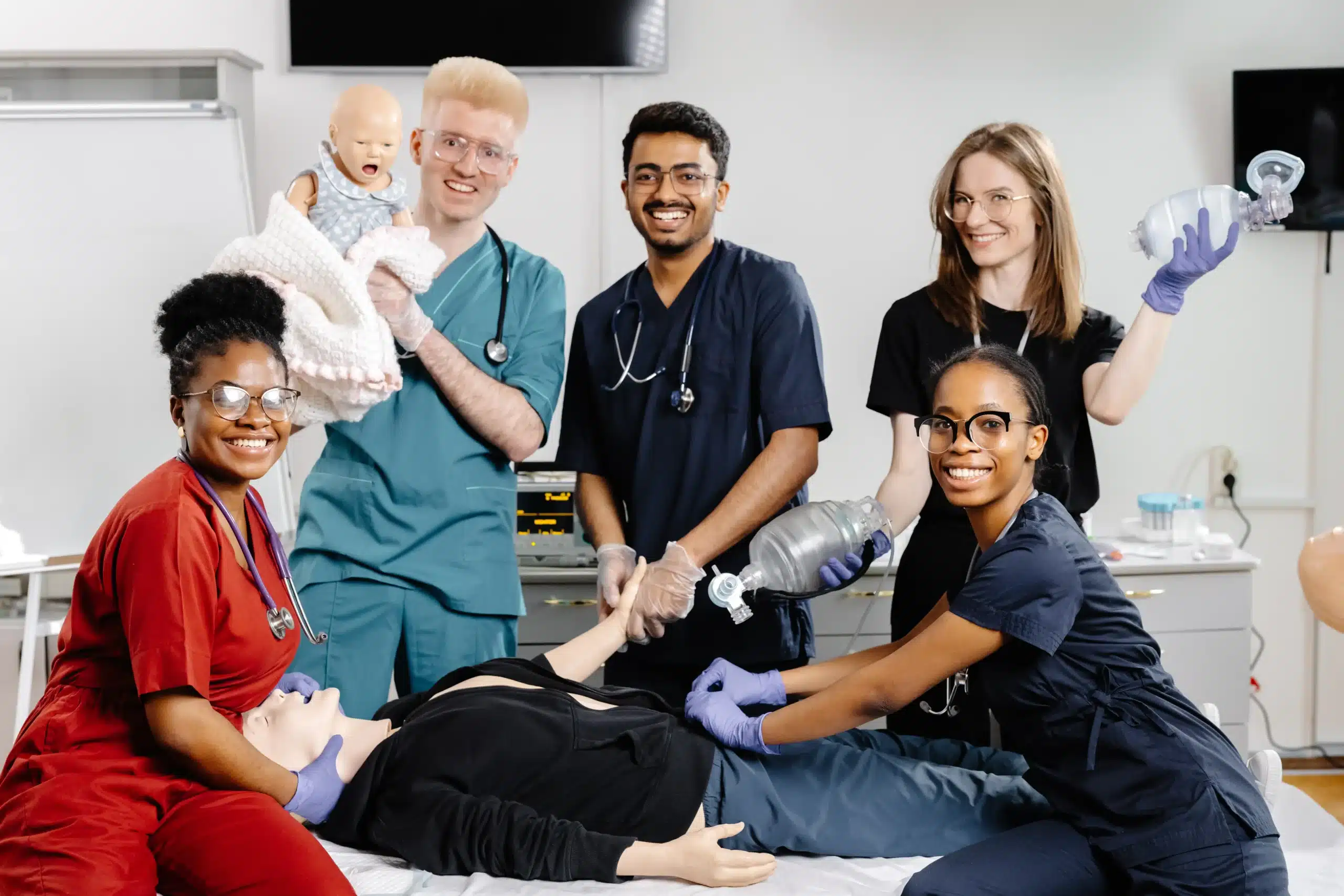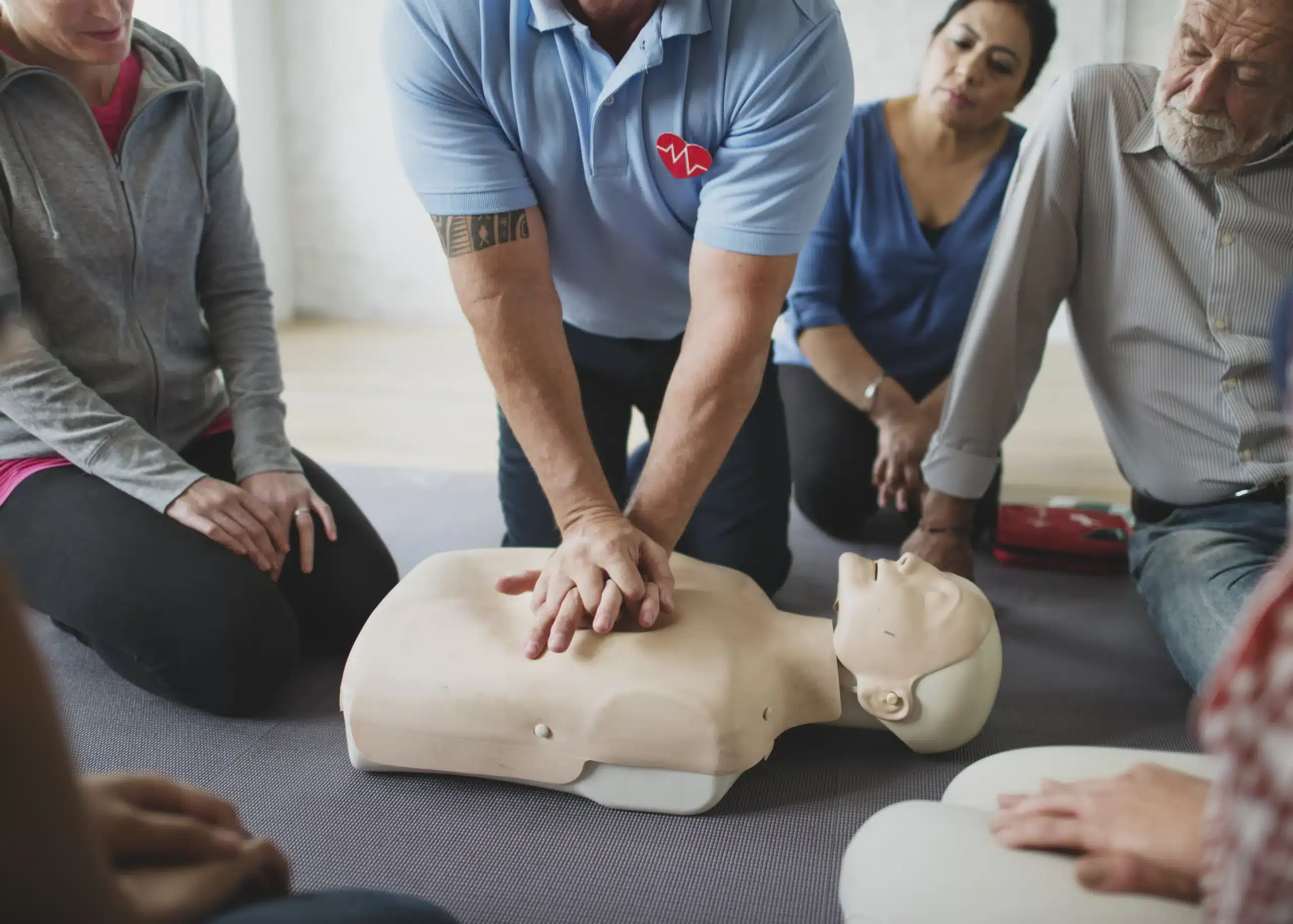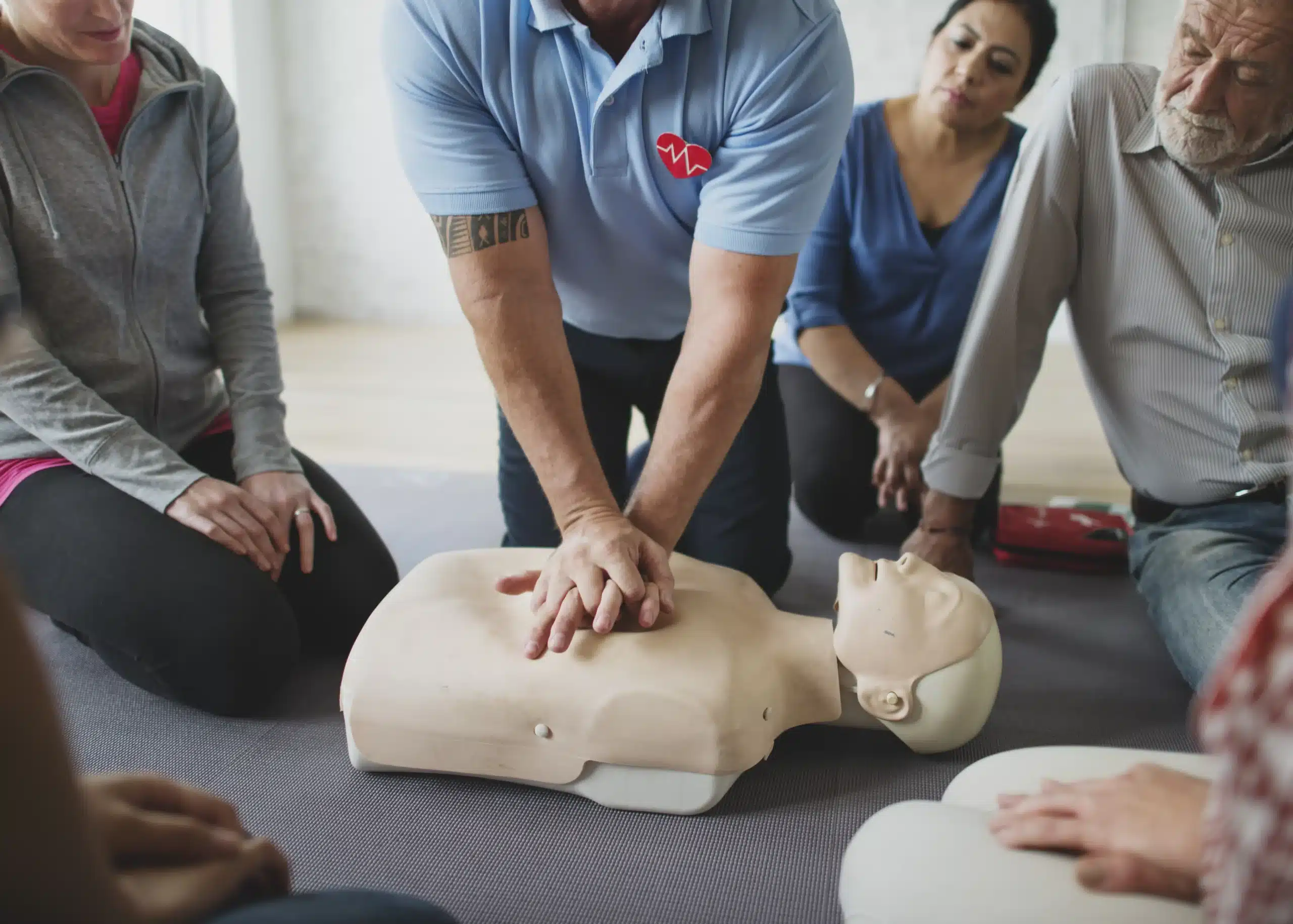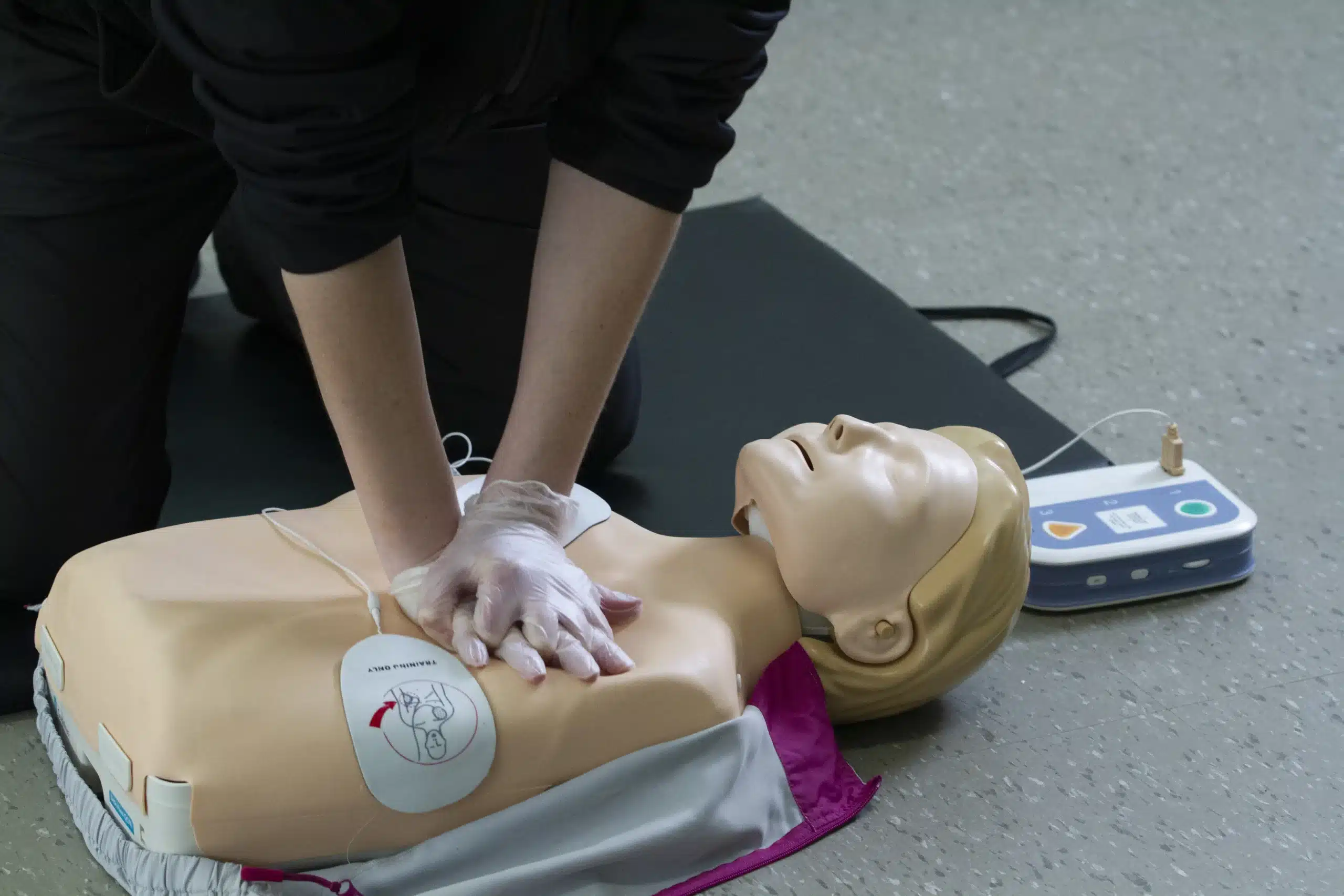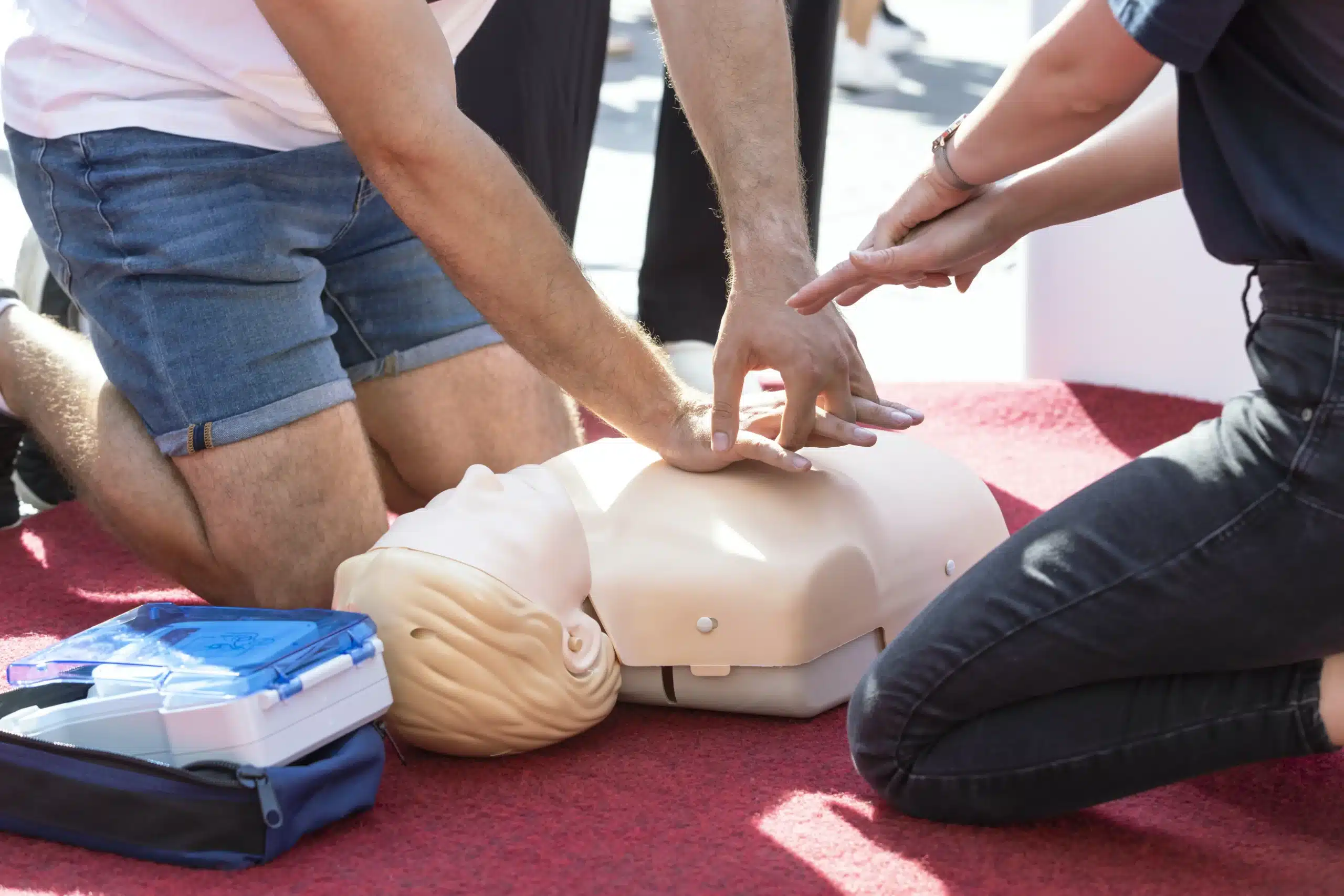Living in San Jose means being part of a vibrant community, and part of that involves looking out for one another, especially our youngest members. Knowing pediatric CPR and first-aid is like having a superpower – it empowers you to step in and help when a child needs it most. Whether you’re a parent, grandparent, teacher, or simply someone who cares about kids, this training can make you a valuable asset in an emergency. This guide will walk you through everything you need to know about pediatric CPR and first-aid in San Jose, from finding the right class to maintaining your skills.
Key Takeaways
- Pediatric CPR and First Aid equip you with lifesaving skills: These courses empower you to confidently handle emergencies specific to infants and children, giving you the tools to make a real difference.
- Choosing the right class involves key considerations: Look for experienced, certified instructors, comprehensive course content, and a class format that fits your needs and schedule. Consider factors like class size and instructor qualifications to maximize your learning.
- Staying current is vital: Regularly refresh your training to maintain your skills and stay up-to-date on the latest guidelines. This ensures you’re always prepared to provide the most effective care possible.
What is Pediatric CPR and First Aid?
Pediatric CPR and First Aid focuses on the unique needs of infants and children. It teaches caregivers how to respond to emergencies common in this age group, like choking, allergic reactions, and injuries. Knowing what to do in these situations can truly make a difference.
How It Differs from Adult CPR
Pediatric CPR isn’t the same as adult CPR. The techniques, including the depth of chest compressions, are different. For infants, you’ll use two fingers for compressions, while for children, you might use one hand. The compression depth and rate also change depending on the child’s age. These distinctions are crucial for providing effective care. For more information on adult CPR, check out our BLS certification course.
Common Misconceptions
One common myth is that only medical professionals can perform CPR. That’s simply not true. Hands-only CPR, which focuses on chest compressions, is effective and recommended for anyone, even without formal medical training. Another misconception is that CPR restarts a heart. Actually, CPR helps maintain blood flow until professional help arrives. It’s about buying precious time. Many people also worry about performing mouth-to-mouth on a stranger. Statistically, you’re much more likely to use CPR on someone you know, like a family member. This makes training even more relevant to your everyday life. If you have any questions, feel free to contact us.
Key Scenarios You’ll Learn
In a Pediatric CPR and First Aid class, you’ll learn how to handle various emergencies, including allergic reactions, choking, bleeding, and fractures. You’ll also learn how to respond to unresponsiveness, difficulty breathing, and signs of anaphylaxis. The training covers both the theoretical knowledge and the practical skills you need to act quickly and confidently in a crisis. At Campbell CPR Classes, we offer comprehensive Pediatric CPR and First Aid training. We also offer group discounts to make training more accessible. Check out our low price guarantee for the best rates in Santa Clara County. We even offer specialized courses like RQI training for healthcare professionals.
Where to Find Pediatric CPR and First Aid Classes in San Jose
Knowing where to find reliable pediatric CPR and first aid training can feel overwhelming. This section breaks down some of your options in and around San Jose.
Campbell CPR Classes
We offer comprehensive pediatric CPR and first aid training right here in Campbell, conveniently located for those in San Jose, Cupertino, and surrounding areas. Our courses empower parents, caregivers, educators, and anyone who works with children with the confidence to respond effectively in emergencies through hands-on practice and clear instruction. Check out our low price guarantee; we’re committed to making these essential skills accessible.
American Red Cross
The American Red Cross offers CPR and first aid classes in San Jose. As a well-known provider, their courses meet OSHA requirements, making them suitable for many workplaces. Check their website for class schedules and locations.
American Heart Association
Several training centers in San Jose offer AHA-certified courses. AHA certification is widely recognized. Look for training centers offering courses specifically for pediatric CPR and first aid.
Local Hospitals and Medical Centers
Some San Jose area hospitals and medical centers may offer pediatric CPR and first aid classes through community outreach. Check with hospitals like Kaiser Permanente, Stanford Health Care, and Santa Clara Valley Medical Center for upcoming courses. The San Jose Fire Department also occasionally offers training.
Community Colleges
Community colleges often offer health and safety courses, including CPR and first aid. Check with your local community colleges for their offerings. These courses can be a budget-friendly way to get certified.
What Happens in a Pediatric CPR and First Aid Class?
Knowing what to expect can make all the difference when you’re preparing for a pediatric CPR and first aid class. Here’s a glimpse into what you’ll cover and how the class typically unfolds.
Essential Skills You’ll Learn
Pediatric first aid classes equip you with the skills to respond to a range of emergencies. You’ll learn how to recognize and address breathing problems like choking, and how to handle injuries such as bleeding and fractures. The curriculum also covers sudden illnesses like seizures and allergic reactions. These courses often incorporate real-life scenarios, giving you the confidence to act quickly and effectively in an emergency. For a helpful overview of topics covered in a typical class, check out this guide to pediatric first aid.
Course Duration and Format
Most pediatric first aid and CPR courses blend theory with hands-on practice. You’ll start with fundamental concepts and then move into simulated scenarios where you can apply what you’ve learned. This combination of instruction and practice helps solidify the skills and builds your confidence. The Red Cross offers these essential life-saving skills training courses, which typically only take a few hours to complete.
Hands-on Practice
Hands-on training is a crucial part of pediatric CPR and first aid certification. You’ll practice techniques like CPR on infant and child mannequins and learn how to respond to various first aid scenarios. This practical experience is invaluable for mastering the skills and feeling prepared to use them in real-life situations. Metropolitan Pediatrics discusses the basics of pediatric first aid and emphasizes the importance of hands-on learning.
Certification Process
After completing the required coursework and demonstrating proficiency in the skills, you’ll receive your certification. This process ensures you’ve met the standards set by organizations like the American Heart Association. CPR and first aid training is designed to be accessible to everyone, regardless of background. Common misconceptions about CPR and first aid are often a barrier to entry, but dispelling these myths can encourage more people to pursue this important training. For many jobs, especially those involving childcare or healthcare, CPR certification is often a requirement.
Costs and Accessibility
Knowing the price range and what impacts it can help you find the right Pediatric CPR and First Aid class for your needs. Let’s break down the typical costs and explore some ways to make these essential courses more accessible.
Average Price Range
Pediatric CPR and First Aid class prices vary based on location, instructor, and the organization offering the course. Generally, you can expect to find BLS classes starting around $70, ACLS courses between $150 and $190, and PALS classes around $190. Keep in mind that these are averages, and prices can differ. It’s always a good idea to check with specific training centers for their current rates. For example, you can explore options and pricing for BLS certification through Campbell CPR Classes.
Group Discounts and Special Offers
If you’re training a group, such as staff, parents, or a team of coaches, inquire about group discounts. Many providers offer reduced rates for group registrations, making training more affordable. This can be a great way to equip everyone with lifesaving skills without breaking the bank. Campbell CPR Classes offers discounts for group registrations.
Campbell CPR Classes’ Low Price Guarantee
Campbell CPR Classes is committed to making these vital courses accessible with competitive pricing and a Low Price Guarantee, ensuring you’re getting the best value in Santa Clara County. Learn more about their Low Price Guarantee and find a course that fits your budget.
Flexible Scheduling
Busy schedules shouldn’t be a barrier to learning these essential skills. Many training centers offer flexible scheduling options, including weekend and evening classes. Campbell CPR Classes serves the San Jose, Campbell, and Cupertino areas, and some providers even offer on-site training. This eliminates travel time and makes coordinating group training much easier. Contact Campbell CPR Classes to discuss your scheduling needs and find a class that fits your life. They also offer specialized courses like RQI training for healthcare professionals.
Choose the Right Class
Finding the right pediatric CPR and first aid class means thinking about a few key things. It’s not just about getting certified; it’s about feeling truly prepared to handle an emergency. Here’s what to consider:
Instructor Qualifications and Experience
Experienced, certified instructors are essential for effective learning. Look for classes led by professionals with a solid healthcare background and a passion for teaching. Ask about their experience and certifications – they should ideally hold current certifications from reputable organizations like the American Heart Association (AHA) or the American Red Cross. Smaller classes often allow for more individual attention and feedback, so factor this into your decision. Campbell CPR Classes prioritizes small class sizes to maximize student learning.
Course Content and Skills
Make sure the course covers the essentials, such as CPR for infants and children, choking relief, and basic first aid for common childhood injuries. A good pediatric first aid class will also cover allergic reactions, burns, and other situations you might face as a parent, caregiver, or educator. Review the course description to ensure it meets your specific needs. The American Red Cross, for example, offers a comprehensive Adult and Pediatric CPR/AED course covering many of these vital skills.
Class Size and Format
Think about your learning style and preferences when selecting a class format. In-person classes provide hands-on practice and direct interaction with the instructor. Blended learning, which combines online modules with in-person skills sessions, offers more flexibility for busy schedules. Consider what approach suits you best. The Red Cross offers both in-person and blended learning formats for their CPR training.
Certification Details and Validity
Check what certification you’ll receive after completing the course. Most certifications are valid for two years. Ensure the certifying organization is recognized and respected in your field, especially if your job requires certification. Understanding the certification’s validity period will help you stay current with renewals and maintain your qualifications.
Maintain Your Skills and Certification
Knowing how to help a child in a medical emergency can make all the difference. But guidelines and best practices change, so it’s important to keep your pediatric CPR and first-aid skills fresh. This section covers why staying current matters and how you can do it.
Why Keep Your Skills Current?
In a crisis, every second counts. Regularly refreshing your pediatric CPR and first-aid training helps you respond quickly and effectively. Plus, staying up-to-date on the latest guidelines ensures you’re providing the best possible care, based on current medical understanding. It’s easy to fall back on outdated information or practices, especially if you haven’t used your skills recently. Regular training reinforces proper techniques and addresses any changes in recommendations. This can significantly impact the outcome of an emergency.
How to Renew Your Certification
Most pediatric CPR and first-aid certifications are valid for two years. Check your current certification card for the expiration date. When it’s time to renew, look for a recertification course. These classes are typically shorter than initial certification courses, as they focus on reviewing and updating existing skills. Campbell CPR Classes offers recertification courses for several disciplines, including CPR, first aid, and BLS.
Ongoing Education and Updates
Even between recertifications, it’s a good idea to stay informed about changes in pediatric CPR and first-aid guidelines. Medical knowledge is constantly evolving, so staying current is crucial. Subscribe to newsletters from reputable organizations like the American Heart Association or the Red Cross to receive updates. You can also find valuable information and refreshers through online resources and short videos. Staying informed ensures you’re always prepared to provide the most effective care possible.
The Impact of Training
Benefits for Parents, Caregivers, and Educators
Knowing what to do in a medical emergency can make all the difference. As a parent, caregiver, or educator, you’re responsible for the safety and well-being of the children in your care. Equipping yourself with pediatric CPR and first aid skills empowers you to respond effectively to a range of situations, from minor injuries to life-threatening emergencies. A few hours of training can give you the confidence to act quickly and potentially save a child’s life.
Community Safety and Preparedness
CPR and first aid training isn’t just for healthcare professionals—it’s a valuable skill for everyone. The more people in our community trained, the safer we all are. Bystanders trained in CPR can provide immediate assistance in an emergency, increasing the chances of survival. Learning these skills also helps dispel common misconceptions about first aid and CPR, encouraging more people to seek training and become confident responders. This widespread preparedness creates a network of support within the community, ensuring help is available when needed.
Regulatory Requirements in San Jose
For many childcare providers in San Jose, pediatric first aid, CPR, and AED training is a requirement. The California EMSA mandates this certification for licensed daycare and preschool teachers, ensuring a baseline level of preparedness. If you’re working in this field, make sure you’re meeting these requirements. Even if it’s not mandatory for your role, having this training can enhance your professional qualifications and demonstrate your commitment to safety. Check with local training centers for combined CPR and first aid certification courses. This streamlines the process and makes it easier to stay compliant.
Related Articles
- Online PALS Classes in Cupertino: Your Guide – Campbell CPR Classes
- CPR Certification in San Jose: Your Complete Guide – Campbell CPR Classes
- CPR Myths Debunked for Better First Aid
- CPR & First-aid Classes in Campbell, CA – Campbell CPR Classes
- CPR & First Aid Training in Cupertino: Your Guide – Campbell CPR Classes
Frequently Asked Questions
Is pediatric CPR the same as adult CPR? No. Techniques like chest compression depth and hand placement differ depending on the child’s age and size. Infant CPR uses two fingers, while child CPR might use one hand. The compression rate also varies. These differences are critical for providing safe and effective care.
Where can I find pediatric CPR classes near me? Several options exist in the San Jose area, including Campbell CPR Classes, the American Red Cross, and various hospitals and community centers. Online searches can help you locate certified instructors and compare course offerings. Consider factors like location, schedule, and cost when making your choice.
What should I expect in a pediatric CPR class? Expect a mix of instruction and hands-on practice. You’ll learn to recognize emergencies, perform CPR on infant and child mannequins, and administer basic first aid. Classes also cover topics like choking, allergic reactions, and common childhood injuries. The goal is to equip you with the knowledge and skills to respond confidently in real-life situations.
How much do pediatric CPR and first aid classes cost? Costs vary depending on the provider and location. Group discounts are often available, so inquire if you’re training multiple people. Look for providers offering competitive pricing and transparent fee structures. Some organizations also offer financial assistance or payment plans.
How long is a pediatric CPR certification valid, and how do I renew it? Certifications typically last two years. Recertification courses are available to refresh your skills and update your knowledge. These courses are usually shorter than the initial certification and focus on reinforcing proper techniques and addressing any changes in guidelines. Check with your certifying organization for renewal requirements and options.


